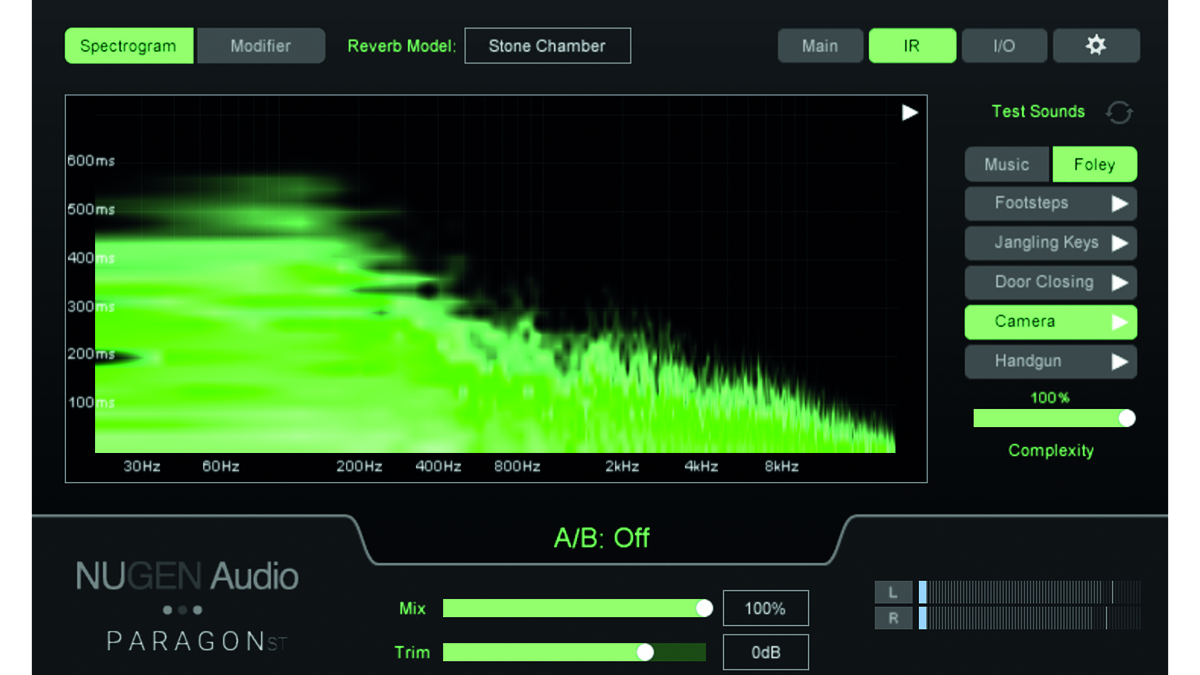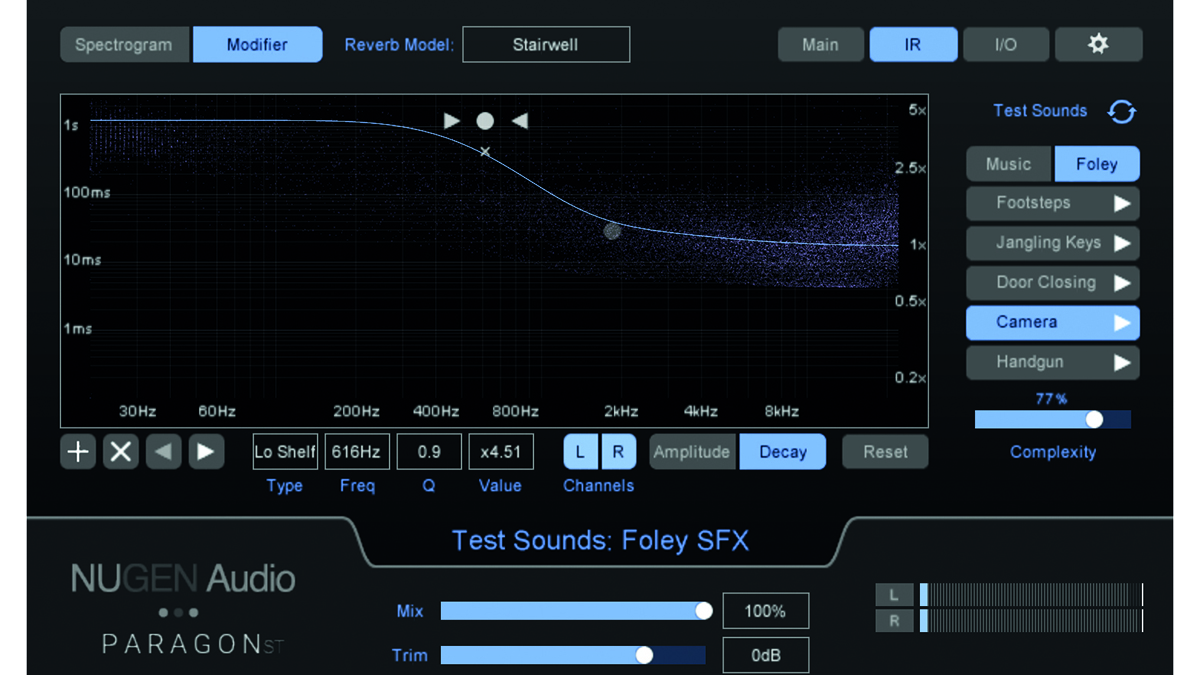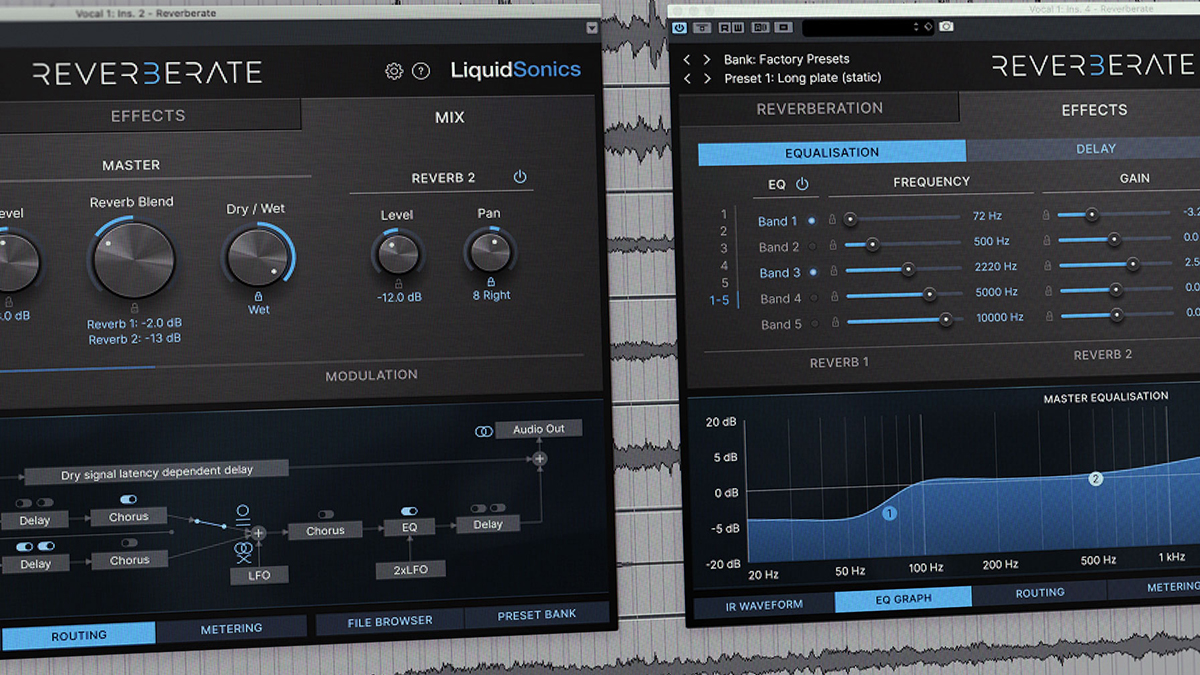MusicRadar Verdict
Typical convolution reverbs sound great but have limitations; Paragon ST uses clever maths to address them. Brilliant stuff.
Pros
- +
Sounds excellent.
- +
Broad selection of core reverb models.
- +
Impressive editing flexibility.
- +
Handy mid/sides style width adjustment.
- +
Flexible channel specific adjustments.
Cons
- -
Can’t import your own impulse responses.
MusicRadar's got your back
Nugen Audio Paragon ST: What is it?
The reverbs we use are usually built using either mathematical models (algorithmic) or from impulse responses of real spaces (convolution). Paragon ST (AAX, VST3, AU and AudioSuite) is a stereo-only version of Nugen Audio’s 3D convolution reverb and is now available in its own right.
If you’re not familiar with Paragon, it couples a premium convolution engine with the editing flexibility of an algorithmic reverb. However, with typical editable parameters such as decay, size and brightness achieved using re-synthesis rather than time-stretching, it’s not susceptible to artefacts. What’s more, with so much onboard flexibility, Paragon ST has a much smaller IR library, which is more efficient and saves you disk space.
Core concepts
Paragon ST has a pretty standard layout with preset management at the top, parameter editing and visualisation in the middle, and output Mix, Trim and metering at the bottom. The centre section includes two main tabbed windows (Main and IR) with a couple of further tabs handling settings (including the colour scheme) and I/O.
It’s worth mentioning that the I/O options are extensive and this is inevitably down to Paragon’s multichannel heritage. Either way, if you need to edit channel-specific pre-delay, high/low-cut filtering, decay time or even crosstalk over and above the main parameters, this is where you can do it.
Over on the Main tab, you’ll find typical reverb parameters including Decay, Pre-delay, Size, Brightness and channel Crosstalk. Meanwhile further parameters, and recent additions to Paragon include Modulation with tempo sync, tempo-locked Pre-delay, and Mic Distance. This last option adjusts the balance between early and late reflections so you can influence perceived distance without adjusting the decay time. Finally, Stereo Width, which is a Paragon ST-only feature, provides mid/side-style stereo adjustment.
Nugen Audio Paragon ST: Performance and verdict

Once you start to dig in, it quickly becomes apparent that the main page parameters provide lots of flexibility, and with a choice of 80 presets based on 19 IRs (Reverb Models), Paragon ST covers a lot of sonic ground.
With a choice of 80 presets based on 19 IRs (Reverb Models), Paragon ST covers a lot of sonic ground
However, if you head over to the IR tab you’ll find not only a lovely Spectrogram representation of the IR, but also, under the Modifier tab, a frequency graph display. And it’s here via the Amplitude and Decay options that things get truly flexible.
Want all the hottest music and gear news, reviews, deals, features and more, direct to your inbox? Sign up here.
On each display you can add up to five nodes with peaking and shelving options. On the Amplitude tab you can EQ the Reverb Model; meanwhile on the Decay tab you’re actually adjusting the decay multiplier on a frequency specific basis. This is wonderfully powerful and although you won’t find any extreme demonstrations of this in the presets, we quickly conjured up some great special effects by lengthening and enhancing specific aspects of the sonic spectrum.

To assist editing, Paragon ST’s Reverb Models include a number of musical and foley preview sounds with both looped and one-shot playback. On the Spectrogram page you can also audition the raw impulse including its original impulse sound. Altogether this makes the process of editing incredibly simple and offers great complementary features to the main page parameters.
Super Sound
One of the big selling points for the original version of Paragon is its multichannel capabilities, but with Paragon ST the emphasis shifts to stereo. For us, convolution reverb is about capturing either authentic real spaces, or capturing existing classic hardware.

• LiquidSonics Reverberate
Manipulate the early/late reverb components of this reverb using the Fusion-IR technology.
• HOFA IQ Series Reverb 2
Loads of powerful features and a 1500 impulse library make this an excellent choice.
Clearly, the latter aspect is not part of Paragon ST’s offering, and there are no hardware-derived reverb models included. With regard to the former, Paragon ST delivers a surprisingly broad range of effects. There are some excellent larger spaces, and we particularly liked the presets derived from the Hall, Chamber and Stone Chamber models.
Nevertheless, to our surprise it’s actually the smaller spaces that caught our ear, and there are some awesome smaller effects that are great for adding width around sounds. Presets such as Add Warmth and Room Ambience achieve wonderful natural space. Meanwhile, a number of outside-derived models (Street Alleyway and Garden, for example) brighten and enhance. All these presets and a number of others are great for adding those ‘barely there’ effects that we’re often looking for.
Paragon ST also has some great modulation options, but these have yet to be fully exploited in the preset library. The few presets that do use the modulation (Worm Hole and Retro Vocal Slap for example), demonstrate how good this aspect can sound.
All told, Paragon ST is a pretty impressive reverb that has forced us to re-evaluate how we view convolution and its capabilities. That said, because impulse responses need to be specially prepared so they can be re-synthesised, it also lacks the flexibility to directly import any raw impulse. At £209, it’s half the price of its multichannel sibling, and while that’s obviously not cheap, in comparison to other quality stereo reverb plugins, we think this offers very good value. What’s more, Nugen are committed to further developing its offering, so additional Reverb Models could easily be added in at a later date.
MusicRadar verdict: Typical convolution reverbs sound great but have limitations; Paragon ST uses clever maths to address them. Brilliant stuff.
Nugen Audio Paragon ST: Hands-on demos
Nugen Audio
The Producer Tutor
Nugen Audio Paragon ST: Specifications
- Mac OSX 10.9 / 512 MB RAM.
- Windows (64 bit) Vista or above / 512MB RAM.
- AAX, VST3, AU and AudioSuite, in 64-bit only.
- CONTACT: Nugen Audio
Computer Music magazine is the world’s best selling publication dedicated solely to making great music with your Mac or PC computer. Each issue it brings its lucky readers the best in cutting-edge tutorials, need-to-know, expert software reviews and even all the tools you actually need to make great music today, courtesy of our legendary CM Plugin Suite.

